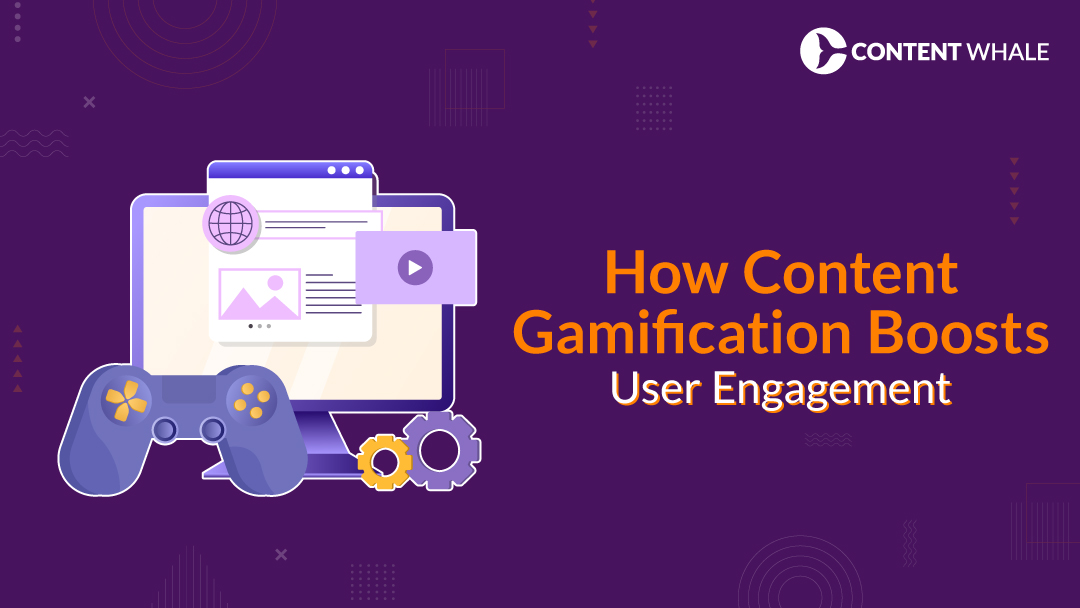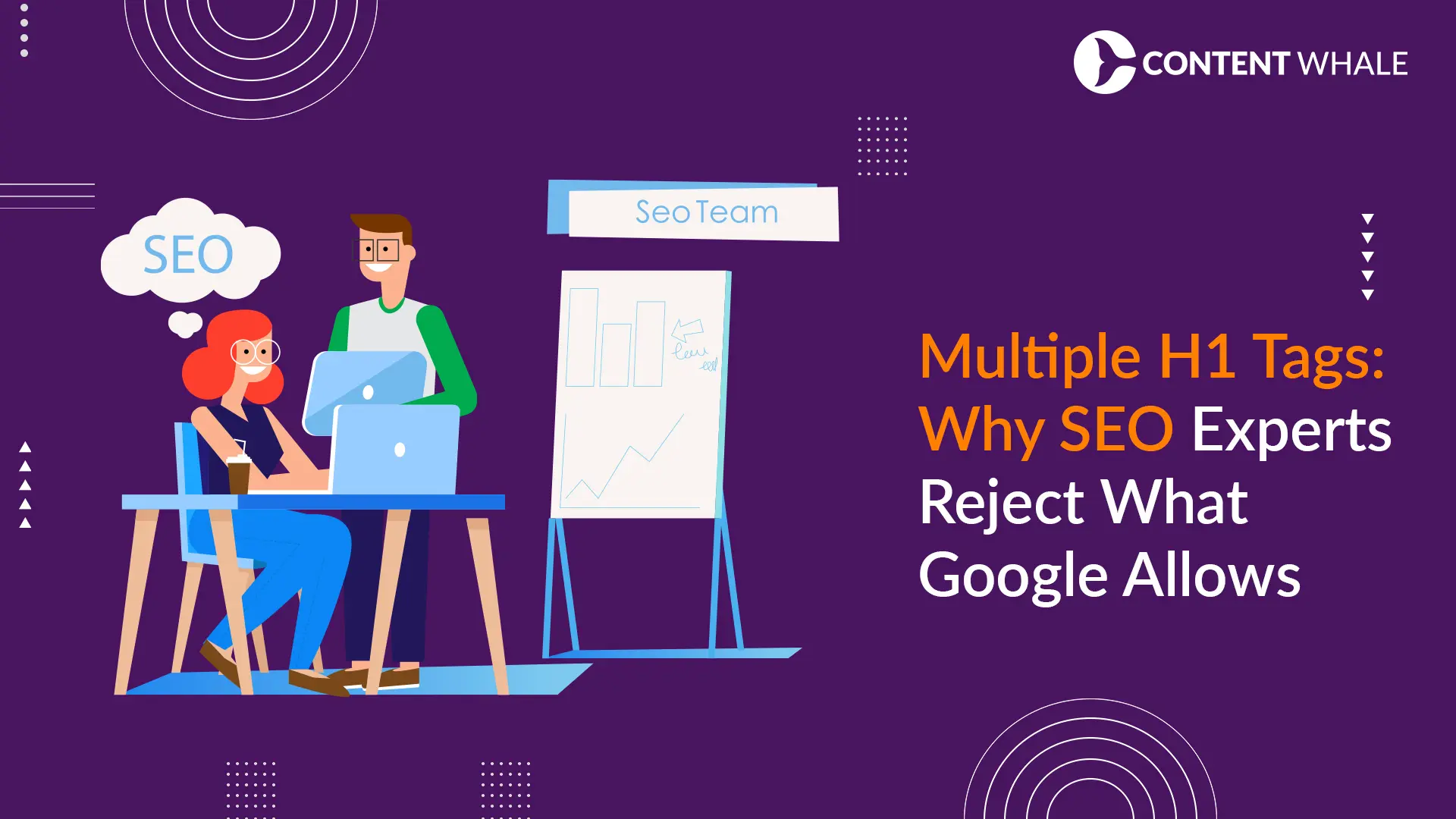Quick Summary
Content gamification integrates game-like elements into marketing content to boost user engagement. This approach uses tools such as quizzes, challenges, and leaderboards to create interactive and memorable experiences. Benefits include increased engagement, enhanced learning, higher conversion rates, and community building. Practical examples like M&M’s Eye-Spy Pretzel game and Duolingo’s streak system illustrate its effectiveness. Content Whale specializes in creating engaging gamified content to enhance your brand’s interactive marketing efforts, ensuring deeper user interaction and satisfaction.
Content gamification is becoming increasingly important in digital marketing. It uses game-like elements to make content more engaging and fun. By incorporating gamification, brands can significantly boost user engagement and create more interactive marketing experiences.
This blog will explore the concept of content gamification and its growing relevance. We will discuss the key benefits, such as increased engagement and higher conversion rates. Additionally, we will look at practical examples that showcase how gamification can transform content marketing strategies.
Finally, we will introduce how Content Whale can assist in creating gamified content. Our expertise ensures that your brand’s content is not only engaging but also drives meaningful interactions. Whether it’s quizzes, challenges, or leaderboards, we can help you integrate these elements effectively.
Stay tuned to discover how content gamification can enhance your marketing efforts and improve user engagement through interactive marketing strategies.
What is Content Gamification?

1. Definition of Content Gamification
Content gamification involves integrating game-like elements into content to boost user engagement. It uses techniques such as point scoring, leaderboards, and rewards to make content more interactive and enjoyable.
This approach motivates users to participate and engage more deeply with the content.
2. Application in Content Marketing
In content marketing, gamification can take various forms. Quizzes, challenges, and interactive polls are popular examples. These elements encourage users to interact with the content, increasing the time they spend on the site.
For instance, a quiz about a product’s features can educate users while keeping them entertained.
3. Common Gamification Elements
Leaderboards and badges are other effective gamification tools. They create a sense of competition and achievement among users, boosting engagement and fostering a sense of community.
Challenges that offer rewards or incentives can drive specific user actions, such as signing up for newsletters or making a purchase.
4. Benefits of Content Gamification
Content gamification enhances user engagement by making content fun and interactive. It transforms passive consumption into active participation, creating memorable and impactful experiences.
Brands that leverage gamification in their interactive marketing strategies can see significant improvements in user retention and satisfaction.
Key Benefits of Content Gamification

1. Increased User Engagement
Content gamification captivates users by making content interactive and fun. Gamified elements like quizzes and challenges keep users on your site longer, boosting user engagement.
For instance, gamified marketing can increase engagement rates by up to 50% and boost browsing time by around 30%.
2. Enhanced Learning and Retention
Gamification helps users remember content better. Interactive elements make learning enjoyable, ensuring users retain information longer.
For example, interactive tutorials and quizzes help customers understand complex concepts, leaving a lasting impression.
3. Higher Conversion Rates
Gamified content drives user actions through rewards and incentives. Offering points, badges, or other rewards encourages users to take desired actions, such as subscribing or purchasing.
This can lead to higher conversion rates. For example, Kayser-Roth saw a 100%+ increase in opt-ins with a gamified voucher giveaway.
4. Community Building
Leaderboards and social sharing features foster a sense of community among users. Gamification creates a competitive environment where users can share achievements, enhancing user engagement and loyalty.
This sense of community encourages users to return and stay connected with your brand. For example, Duolingo’s streak feature encourages daily engagement, increasing user satisfaction and retention.
Content gamification offers a powerful way to boost user engagement and achieve marketing goals. By incorporating interactive elements, brands can create memorable experiences that drive user actions and build a loyal community.
Leveraging gamification in interactive marketing strategies can significantly improve user satisfaction and retention.
Practical Examples of Gamification Enhancing User Engagement

Case Study 1: Quizzes for Social Media Engagement
M&M’s Eye-Spy Pretzel campaign involved a simple game where users searched for a hidden pretzel in an image. This nostalgic game entertained users and promoted their new product.
The campaign was successful due to its simplicity and high engagement rates. Users earned points they could exchange for rewards, driving significant user engagement and brand interaction.
Case Study 2: Challenges and Rewards to Increase Website Traffic
The Michaels advent calendar campaign demonstrated the effective use of content gamification. Customers received emails promoting a holiday-themed advent calendar that included surveys and rewards.
This campaign resulted in 80,000+ reactivated emails and high engagement, with 41% of recipients interacting with the content. It also collected valuable customer data, showing the potential of gamified content to increase website traffic and user interaction.
Case Study 3: Using Leaderboards and Badges to Foster Competition and Loyalty
Duolingo uses a streak system to encourage daily language practice. Users earn rewards for maintaining their streaks, motivating them to engage consistently. This approach not only improves learning but also builds loyalty and increases user engagement.
The combination of streaks, virtual currency, and level progression keeps users returning, making Duolingo a standout example of effective gamification.
Tips for Incorporating Gamification into Your Content Marketing
- Start with Simple Elements: Use quizzes or polls to engage users.
- Offer Tangible Rewards: Provide incentives such as discounts or exclusive content.
- Create a Narrative: Develop a storyline to make the gamified experience more immersive.
- Utilize Social Sharing: Encourage users to share their achievements on social media to expand your reach.
These examples show how content gamification can significantly enhance user engagement and interactive marketing.
By incorporating gamified elements, brands can create memorable experiences that drive actions and build a loyal community.

Content gamification offers numerous benefits for brands aiming to enhance user engagement and achieve marketing goals. Integrating gamified elements like quizzes, challenges, and leaderboards creates interactive and memorable experiences that encourage users to engage more deeply with your content and brand.
The examples discussed highlight how gamification can transform marketing strategies. Brands like M&M’s and Duolingo have successfully used gamification to boost engagement and loyalty. Such strategies increase interaction and create a sense of community among users.
Incorporating gamification into your marketing efforts can significantly improve user engagement and retention. Content Whale specializes in creating engaging and interactive gamified content tailored to your brand’s needs.
Our team offers end-to-end solutions, from conceptualizing gamification strategies to creating and implementing engaging content. This ensures effective interactive marketing that captivates your audience and drives meaningful interactions.
Embrace content gamification to enhance your marketing and foster a loyal, engaged community.
FAQs
What is content gamification?
Content gamification involves integrating game-like elements into digital content to enhance user engagement. It uses tools like quizzes, challenges, and leaderboards to make content more interactive and enjoyable.
How does gamification improve user engagement?
Gamification increases user engagement by making interactions fun and rewarding. Elements like points, badges, and challenges motivate users to participate actively, increasing their time spent on the platform and their interaction with the content.
What are some examples of content gamification?
Examples include M&M’s Eye-Spy Pretzel game, which boosted user interaction through a simple, nostalgic game.
Duolingo uses a streak system to encourage daily practice, enhancing learning and retention. These examples show how gamification can transform user experiences.
How can I start to gamify my content?
Start with simple gamified elements like quizzes or polls. Offer rewards for participation and create engaging challenges.
Use leaderboards to foster competition and community. Ensure that the gamification elements align with your brand’s goals and audience preferences.
How can Content Whale help with content gamification?
Content Whale provides end-to-end solutions for content gamification. Our team helps conceptualize, create, and implement gamified content tailored to your brand.
We focus on boosting user engagement through effective interactive marketing strategies.





